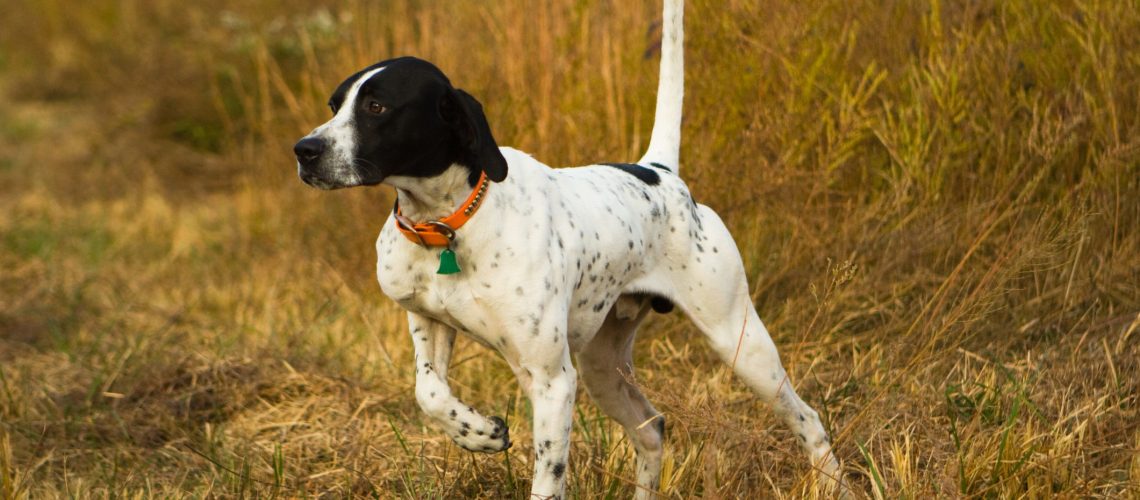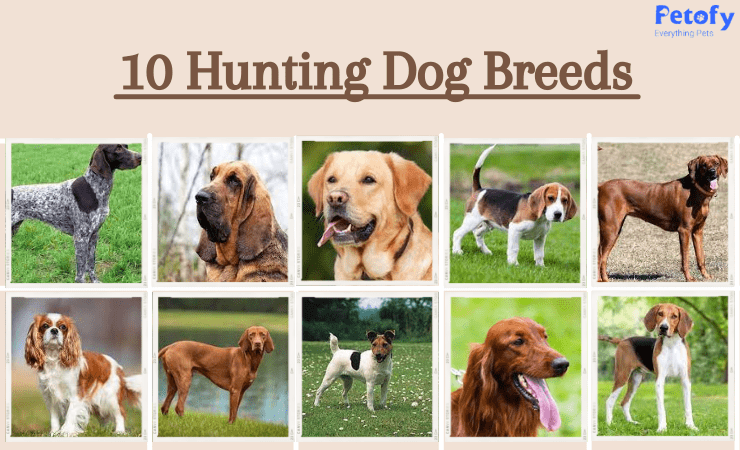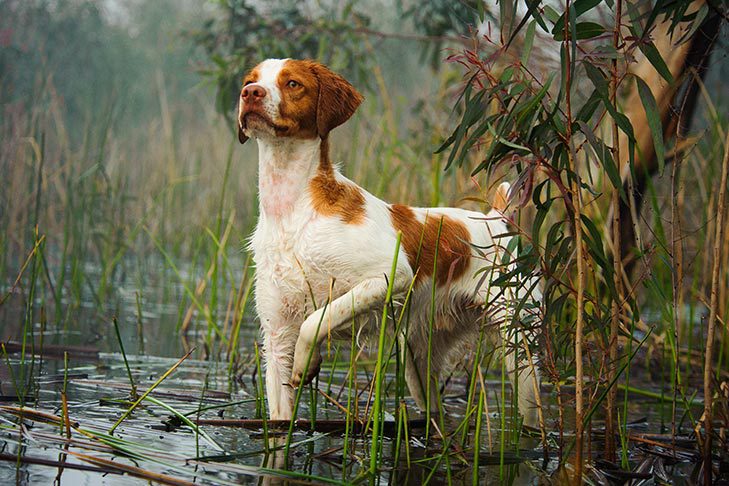Key Takeaways:
-
1. Pointing dog breeds have a natural instinct to locate and point out prey, making them excellent hunting companions.
2. These breeds possess a unique ability to freeze in place, using their body language to indicate the presence of game to hunters.
3. Some popular pointing dog breeds include the German Shorthaired Pointer, English Pointer, and Brittany Spaniel.
4. Pointing dogs require regular exercise and mental stimulation to prevent boredom and destructive behavior.
5. Training is essential for these breeds to develop their pointing skills and ensure they can be controlled in various hunting situations.
Are you a dog lover? Do you often find yourself marveling at the incredible instincts and abilities of our furry friends? If so, then get ready to embark on an exciting journey into the world of hunting dogs. In this article, we will explore 10 remarkable dog breeds that possess an innate skill for pointing out prey. Understanding these breeds and their unique abilities can not only deepen your appreciation for their intelligence but also provide valuable insights into the fascinating world of canine behavior. So, whether you're a seasoned dog enthusiast or simply curious about our four-legged companions, join us as we uncover the hidden talents of these extraordinary dogs. Get ready to be amazed by nature's finest hunters!
Dog Breeds Known for Pointing Out Prey
Introduction
Dogs have been loyal companions to humans for centuries, and their intelligence and instincts make them invaluable in various tasks. Some dog breeds are specifically known for their exceptional ability to point out prey during hunting expeditions. These dogs possess a natural instinct that allows them to locate and signal the presence of game animals, helping hunters track down their targets more effectively.
1. German Shorthaired Pointer
The German Shorthaired Pointer is a versatile hunting breed known for its excellent pointing skills. These dogs have a keen sense of smell and an innate desire to hunt. They can detect the scent of prey from a distance and freeze in a distinctive pointing position when they locate it. This behavior helps hunters identify the exact location of the game animal.
2. English Setter
The English Setter is another popular hunting breed that excels at pointing out prey. With their long, elegant coats and graceful movements, these dogs are not only beautiful but also highly skilled in the field. English Setters use their keen sense of smell to track down game birds such as pheasants or quails. Once they find the target, they freeze in a "set" position with one paw raised, indicating to the hunter where the bird is hiding.
How Hunting Dogs Use Their Instincts to Help Hunters
Instincts Passed Down Through Generations
Hunting dogs have inherited instincts that have been refined through generations of selective breeding. These instincts enable them to assist hunters by locating prey efficiently and signaling its presence without disturbing it.
1. Tracking Skills
Hunting dogs possess an extraordinary sense of smell, which allows them to track the scent of game animals over long distances. Their olfactory receptors are highly developed, making them capable of detecting even the faintest traces of scent left by prey. This ability helps hunters follow the trail and close in on their targets.
2. Pointing Behavior
One of the most remarkable instincts displayed by hunting dogs is their pointing behavior. When these dogs detect the presence of prey, they instinctively freeze in a pointing position, directing their gaze towards the target. This behavior not only alerts the hunter but also prevents the dog from scaring away or flushing out the game animal.
Meet One of the Oldest Pointing Dog Breeds
The History of the Pointer Breed
The Pointer breed is one of the oldest and most distinguished hunting dog breeds. Originating in England during the 17th century, Pointers were initially bred for their exceptional ability to locate and point out game birds such as pheasants and partridges.
1. Purpose-Built for Hunting
Pointers were selectively bred to possess specific traits that made them excellent hunting companions. They have a slender, athletic build that enables them to cover large areas quickly while searching for prey. Their keen sense of smell, combined with their natural instinct to point, makes them indispensable assets for hunters.
2. Gentle Temperament
In addition to their hunting prowess, Pointers are known for their friendly and gentle nature. They form strong bonds with their human companions and are highly trainable due to their intelligence and eagerness to please. These qualities make them not only exceptional working dogs but also beloved family pets.
Why Some Dog Breeds Have a Strong Desire to Chase and Locate Prey
Understanding the Prey Drive
The strong desire of certain dog breeds to chase and locate prey can be attributed to their innate prey drive. Prey drive is a natural instinct that compels dogs to pursue, capture, and retrieve small animals. This instinct varies in intensity among different breeds.
1. Ancestral Traits
Many hunting dog breeds have retained their prey drive as a result of their ancestral heritage. These breeds were originally developed for specific hunting purposes, such as retrieving game or pointing out prey. Over generations, the traits required for these tasks became ingrained in their genetic makeup.
2. Fulfilling Their Purpose
Dogs with a strong prey drive find great satisfaction and fulfillment when they engage in activities related to hunting or tracking. For them, chasing and locating prey is not only instinctual but also deeply rewarding. This intense drive makes them highly motivated and focused when performing these tasks alongside hunters.
How Hunting Dogs Communicate with Hunters When They Find Prey
The Language of Pointing Dogs
Hunting dogs have developed a unique language to communicate with hunters when they locate prey. Through subtle cues and body language, these dogs convey vital information about the location and type of game animal they have found.
1. The Pointing Position
When a hunting dog detects the scent of prey, it freezes in a distinctive pointing position, directing its nose towards the target while keeping its body rigid and motionless. This behavior indicates to the hunter that there is game nearby without alerting or disturbing it.
2. Eye Contact
In addition to freezing in the pointing position, hunting dogs often make direct eye contact with their human companions. This eye contact serves as a subtle form of communication, confirming to the hunter that the dog has indeed located prey and is awaiting further instructions.
Physical Features That Make Certain Dog Breeds Good at Pointing Out Prey
The Anatomy of a Pointing Dog
Certain physical features contribute to making some dog breeds particularly adept at pointing out prey. These attributes enhance their hunting abilities and allow them to excel in locating and signaling the presence of game animals.
1. Long Nose
Dogs with long noses, such as the German Shorthaired Pointer or the English Setter, have an advantage when it comes to detecting scents. Their elongated nasal passages provide a larger surface area for olfactory receptors, allowing them to pick up even faint traces of scent more effectively.
2. Lean and Agile Body
Hunting dogs typically have lean and agile bodies, which enable them to cover rough terrain quickly while searching for prey. Their muscular build allows for efficient movement without tiring easily, ensuring they can keep up with hunters during long expeditions.
Differences in Hunting Skills Among Pointing Dog Breeds
Variations in Hunting Styles
While all pointing dog breeds share the ability to locate and point out prey, there are variations in their hunting styles based on factors such as breed history and individual characteristics.
1. Close-Working Dogs vs. Wide-Ranging Dogs
Some pointing dog breeds, like the English Setter or Brittany Spaniel, are known as close-working dogs. They tend to stay within closer proximity to hunters while searching for game animals, making them suitable for smaller hunting areas or dense cover where game birds may be hiding.
On the other hand, breeds like the German Shorthaired Pointer or the Vizsla are wide-ranging dogs. They cover larger areas and can work independently from hunters, making them ideal for open fields or vast hunting grounds where game birds may be scattered over a wider area.
2. Retrieving Skills
While pointing is their primary skill, some pointing dog breeds also possess excellent retrieving abilities. Breeds like the Labrador Retriever or the Chesapeake Bay Retriever not only locate and point out prey but also retrieve it after it has been shot by the hunter. These dual-purpose dogs provide valuable assistance during both tracking and retrieving phases of a hunt.
In conclusion, these 10 dog breeds have a natural instinct to point out prey. From the energetic and agile German Shorthaired Pointer to the loyal and intelligent English Setter, these dogs can be great companions for hunting or simply enjoying outdoor activities.
What dogs are most prey driven?
Certain dog breeds, such as Terriers, Australian Shepherds, and Border Collies, are more likely to exhibit prey drive due to their breeding history of pursuing, chasing, or hunting. However, any breed of dog can have a strong instinct to chase, so it is essential to recognize the indications and train your dog to manage this instinct.
What type of dogs are pointers?
Dog breeds that are known for their pointing abilities/Typical examples of pointing dog breeds.
What breed of dog pounces on its prey?
The Saluki, also called the Persian Greyhound, is one of the oldest dog breeds. It was originally bred for hunting gazelles and has a strong hunting instinct, often chasing small animals. This breed is known for being aloof and independent.
What breed of dog is prey?
Coco/Sarii is a specific dog named American Dingo, also referred to as a Carolina Dog. This breed has a long history, which made it a suitable choice for a movie set in the 1700s. They are direct descendants of early canines who traveled with humans from Asia to North America through a land bridge.
What dog has no prey drive?
The Cavalier Kings Charles Spaniel is a small and affectionate dog breed that is not inclined towards hunting or chasing prey. They were specifically bred for companionship and excel in fulfilling that role. It's no wonder that they always eagerly accept any chance for cuddles on the sofa.
What is the largest pointing dog breed?
The Gordon setter is the biggest breed among the three setter breeds and may be difficult for inexperienced dog owners. It has a strong instinct to protect and is cautious around unfamiliar people. This breed is a hunting companion that crouches down, remains still, and "sets," indicating the location of its prey in dense vegetation.

















